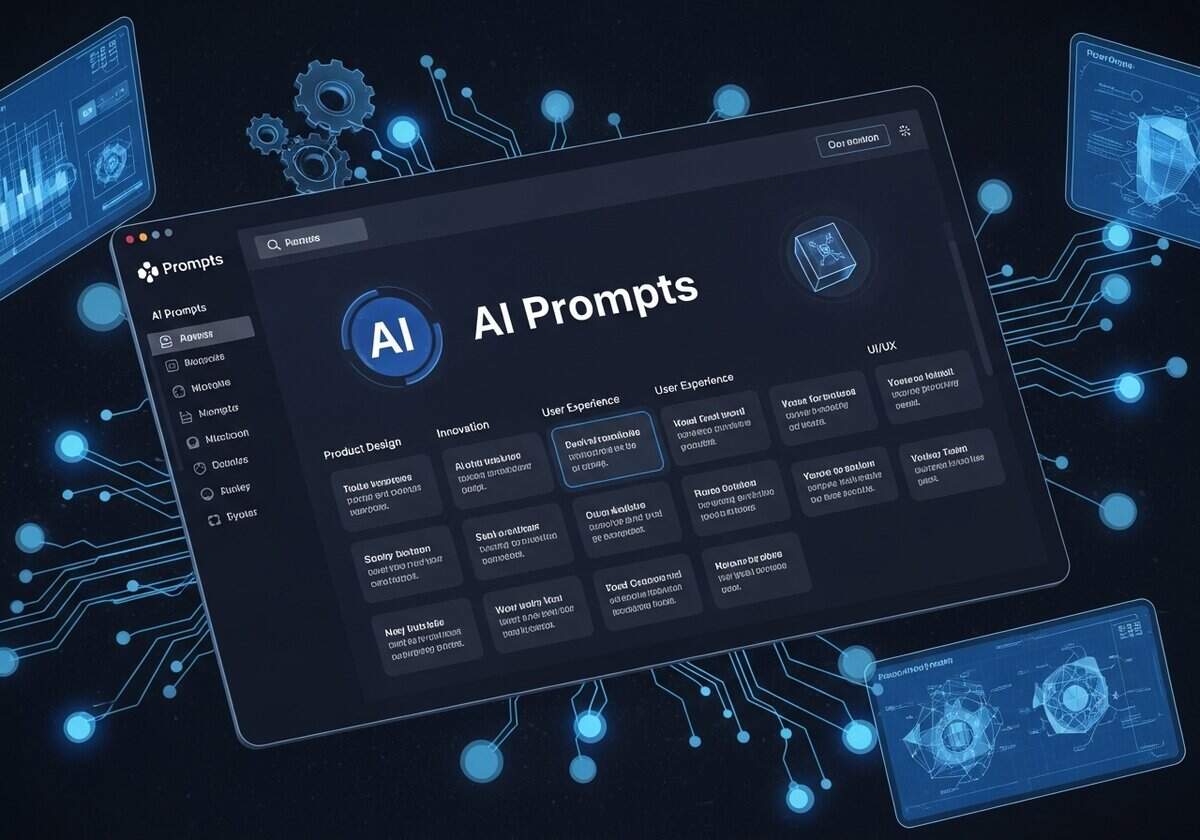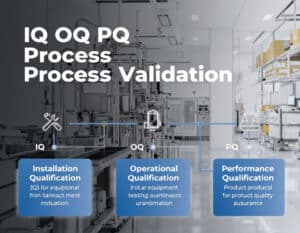产品设计与创新领域最大的人工智能提示目录

Welcome to the world’s largest AI prompts directory dedicated to advanced 产品设计, engineering, science, innovation, quality, and 制造业.虽然在线人工智能工具正在通过增强人类的能力迅速改变工程领域的面貌,但它们的真正威力要通过精确和专业的指令才能释放出来。本综合目录为您提供了一系列此类提示,使您能够指挥人工智能系统处理海量数据、识别复杂模式并生成新颖的解决方案,其效率远远超过传统方法。
发现并微调所需的准确提示,利用在线人工智能代理优化设计,以达到最佳性能和可制造性,加速复杂模拟,准确预测材料特性,并自动执行各种关键分析任务。
通过高级搜索过滤器可以快速访问这个内容广泛的目录,涵盖现代工程学的所有领域。
- 根本原因分析
- 电气工程
人工智能提示 导致 IGBT 故障的因素
- 故障分析, 故障模式和影响分析(FMEA), 维护, 预测性维护算法, 流程改进, 质量控制, 质量管理, 风险分析, 风险管理
根据运行数据和故障模式,识别导致变频驱动器 (VFD) 中绝缘栅双极晶体管 (IGBT) 模块故障的潜在因素。这有助于防止未来发生故障。
输出:
- 文本
- 不需要实时互联网
- 字段:{vfd_model_and_application} {igbt_failure_mode_description} {operational_data_at_failure_csv_description} {vfd_model_and_application} {igbt_failure_mode_description
- 最适合维护工程师和电力电子专家在调查 VFD 中的 IGBT 故障时,需要根据运行数据和故障特征确定一整套潜在的促成因素。
- 根本原因分析
- 电气工程
人工智能提示 SCADA 故障 5 个为什么分析
- 5个为什么, 持续改进, 故障分析, 解决问题的技巧, 流程改进, 质量控制, 质量管理, 风险管理, 根本原因分析
制定 "5 个为什么 "分析法,找出 SCADA 系统通信故障的根本原因。这种结构化提问有助于发现最初症状之外更深层次的系统性问题。
输出:
- Markdown
- 不需要实时互联网
- 字段:{problem_statement_SCADA_failure} {initial_symptom_observed} (初始症状观察到的症状)。
- 最适合对通信故障或其他问题进行根本原因分析的 SCADA 工程师和技术人员,他们需要类似 "5 个为什么 "这样的结构化提问技巧,以深入了解表面症状。
- 根本原因分析
- 电气工程
人工智能提示 放大器噪音的根本原因
- 设计分析, 电气工程, 电子产品, 根本原因分析, 信号处理
根据放大器电路的设计和噪声特性,提出放大器电路中出现意外噪声的潜在根本原因。这有助于排除和诊断电子电路中的问题。
输出:
- 文本
- 不需要实时互联网
- 字段:{放大器原理图的关键部件和拓扑结构} {噪声特性描述} {电路或环境的近期变化}
- 最适合排除放大器电路中意外噪声问题的电子工程师和技术人员,他们需要一份潜在根本原因的综合清单来指导诊断过程。
- 根本原因分析
- 电气工程
人工智能提示 鱼骨图 停电 RCA
- 持续改进, 电气工程, 环境影响, 故障分析, 维护, 解决问题的技巧, 流程改进, 风险管理, 根本原因分析
生成基于文本的鱼骨图(石川)结构,以分析反复停电的潜在根本原因。这为系统性问题调查提供了一个框架。
输出:
- Markdown
- 不需要实时互联网
- 字段:{停电症状描述} {涉及的系统组件列表} {故障时的环境条件{故障时的环境条件}。
- 最适合电气工程师和维护团队在调查经常性停电问题时,需要鱼骨图这样的结构化框架来集思广益,并对潜在的根本原因进行系统分类。
- 预测建模
- 电气工程
人工智能提示 预测微电网短期负荷
- 人工智能(AI), 能源, 环境影响, 机器学习, 预测性维护算法, 可再生能源, 智能电网需求响应, 可持续发展实践
利用提供的历史负荷和天气数据为微电网开发短期负荷预测,以 CSV 格式输出预测结果。这有助于微电网的运行规划。
输出:
- CSV
- 不需要实时互联网
- 字段:{Historical_load_data_csv} {Weather_forecast_data_csv} {prediction_horizon_hours} {天气预报水平小时数
- 最适合微电网运营商或电气工程师需要根据现有历史数据和天气预报进行快速短期负荷预测,以帮助进行运行调度和能源管理。
- 预测建模
- 电气工程
人工智能提示 Python 代码 电机效率
- 效率, 电气工程, 机器学习, 预测性维护算法, 流程改进, 工艺优化, 统计分析, 可持续发展实践
使用 scikit-learn 生成 Python 代码片段,用于根据用户定义的特征预测电机效率的简单线性回归模型。这为基本预测建模任务提供了快速入门。
输出:
- Python
- 不需要实时互联网
- 字段:{input_features_list_str} {target_variable_name_str} {sample_data_csv_structure_description_str} {目标变量名称str
- 最适合希望用 Python 快速实现基本线性回归模型的电气工程师或学生,他们可以利用运行数据预测电机效率或类似的连续变量。
- 预测建模
- 电气工程
人工智能提示 确定能源预测变量
- 建筑信息模型(BIM), 气候, 电气工程, 能源, 环境工程, 环境影响, 可再生能源, 可持续发展实践
为特定地区商业建筑能耗预测模型确定关键输入变量并建议公共数据来源。这就利用了相关外部因素的在线资源。
输出:
- JSON
- 需要实时互联网
- 字段:{建筑类型和用途模式}{区域}{已知的内部数据点_csv_dcription}.{区域} {已知内部数据点_csv_description}。
- 最适合开发能耗预测模型的电气工程师或楼宇经理,他们需要确定相关输入变量并查找外部公共数据来源,以提高模型的准确性。
- 预测建模
- 电气工程
人工智能提示 计划变压器 RUL 模型
- 电气工程, 故障分析, 机器学习, 预测性维护算法, 质量管理, 风险管理, 传感器, 可持续发展实践
概述了开发变压器剩余使用寿命 (RUL) 预测模型的关键步骤、数据要求和建模注意事项。这有助于构建此类系统的开发流程。
输出:
- Markdown
- 不需要实时互联网
- 字段:{available_sensor_data_types_csv} {historical_failure_data_summary}(历史故障数据摘要{关键运行压力源列表} {历史故障数据摘要
- 最适合负责为电力变压器开发预测性维护模型的电气工程师、资产经理或数据科学家,他们需要结构化的方法和考虑因素大纲。
- 优化实验设计
- 电气工程
人工智能提示 高压绝缘测试替代方案
- 电气工程, 故障分析, 材料, 机械性能, 无损检测(NDT), 质量保证, 质量控制, 测试方法
参考指定在线资源中的最新进展,提出表征高压绝缘击穿的替代方法。这有助于工程师探索更有效的现代测试技术。
输出:
- 文本
- 需要实时互联网
- 字段:{当前方法描述} {材料属性摘要示例} {相关期刊或会议文献列表} {材料属性摘要示例} {相关期刊或会议文献列表} {材料属性摘要示例} {材料属性摘要示例{相关期刊或会议文献列表}。
- 最适合高压工程师和材料科学家,希望通过最新研究成果探索先进或替代表征技术,从而改进其绝缘测试协议。
- 优化实验设计
- 电气工程
人工智能提示 优化电能质量监测
- 电导, 电气工程, 电阻, 能源, 环境影响, 工艺优化, 质量控制, 质量管理, 传感器
针对工业厂房的电气系统和关键负载,提出了电能质量监测的优化数据收集策略。这有助于有效识别和诊断电能质量问题。
输出:
- Markdown
- 不需要实时互联网
- 字段:{工厂电气系统摘要}{关键负载和敏感度列表{关键负载和灵敏度列表}{电流监测限制}......
- 最适合负责确保工业环境电能质量的电气工程师、设备经理或顾问,他们需要一个有效监控和数据收集的结构化计划。


























没有人讨论这些目录在人工智能选择方面可能存在的偏见吗?人工智能无法避免偏见,各位。
相关文章
污染控制策略和洁净室26个最佳实践
从 GMP 到 cGMP:完整的母带制作指南
IQ OQ PQ 流程验证:完整理论与实践
“孤独的坚果”、“第一个追随者”和“快速追随者”策略
工程领域代理的 20 个最佳用途
如何向爱斯基摩人销售冰块(又称营销诡计)